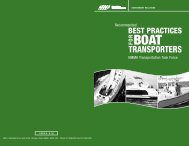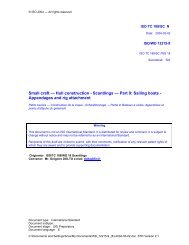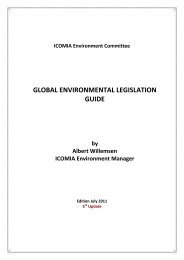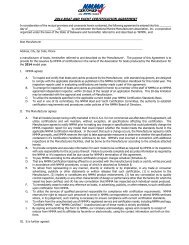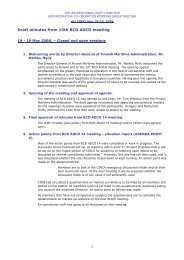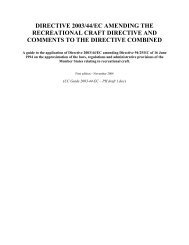Intellectual Property Protection and Enforcement Manual - Ipr-policy.eu
Intellectual Property Protection and Enforcement Manual - Ipr-policy.eu
Intellectual Property Protection and Enforcement Manual - Ipr-policy.eu
You also want an ePaper? Increase the reach of your titles
YUMPU automatically turns print PDFs into web optimized ePapers that Google loves.
Br<strong>and</strong> <strong>Protection</strong> <strong>Manual</strong><br />
An Anti-Counterfeiting <strong>and</strong><br />
Piracy Strategy<br />
Making sure that your IP is properly registered <strong>and</strong> recorded is only one component of a successful<br />
anti-counterfeiting <strong>and</strong>, piracy strategy. You also need a formal anti-counterfeiting <strong>and</strong>, piracy plan.<br />
Although there are trade associations <strong>and</strong> government agencies involved in this fight, the ultimate<br />
responsibility for protecting your br<strong>and</strong>s <strong>and</strong> trademarks is yours. Br<strong>and</strong>s <strong>and</strong> trademarks are<br />
among your most valuable assets—a formal plan, as important as any business plan or new product<br />
specifications should be developed. The need for a plan is even more acute if there are significant<br />
health <strong>and</strong> safety risks associated with the products you manufacture. While it is bad to lose sales <strong>and</strong><br />
market share, it is another thing entirely to have your br<strong>and</strong> name used in connection with a fire or<br />
loss of life.<br />
Unfortunately, there is no off-the-shelf solution to your company’s anti-counterfeiting strategy needs.<br />
Every company is unique, <strong>and</strong> each company’s anti-counterfeiting program must be specifically<br />
tailored to its own particular requirements. The following sections provide some suggestions for<br />
building such a strategy.<br />
Internal Monitoring<br />
A successful anti-counterfeiting strategy begins with self-analysis. Counterfeiters prey on companies<br />
with lax security measures <strong>and</strong> porous supply chains. Moreover, companies that turn a blind eye<br />
to the diversion of products into unauthorized markets or channels of trade are asking for trouble<br />
as this gray market provides perfect cover for counterfeiters to introduce their illegitimate goods.<br />
Counterfeiters have an uncanny ability to detect weaknesses in a br<strong>and</strong> owner’s supply chain <strong>and</strong><br />
frequently point to those weaknesses when accused of counterfeiting.<br />
Although getting products to market would appear to be as simple as moving goods from point<br />
A to point B, it is never that easy. Instead, products typically pass through many h<strong>and</strong>s, from<br />
the manufacturing process to distribution to retail. Each exchange provides an opportunity for<br />
counterfeiters to infiltrate the supply chain with counterfeits. Accordingly, br<strong>and</strong> owners should<br />
consider the following for protecting their supply chains. 33<br />
Legitimate Inputs<br />
To ensure that raw materials <strong>and</strong> parts are authentic <strong>and</strong> meet company st<strong>and</strong>ards, br<strong>and</strong><br />
owners should:<br />
•<br />
Purchase materials <strong>and</strong> equipment used in manufacturing from company-authorized<br />
suppliers only. Where possible, source from fully auditable vendors that source<br />
exclusively from original manufacturers, franchised distributors, or the first owners<br />
of the goods.<br />
Page 11



